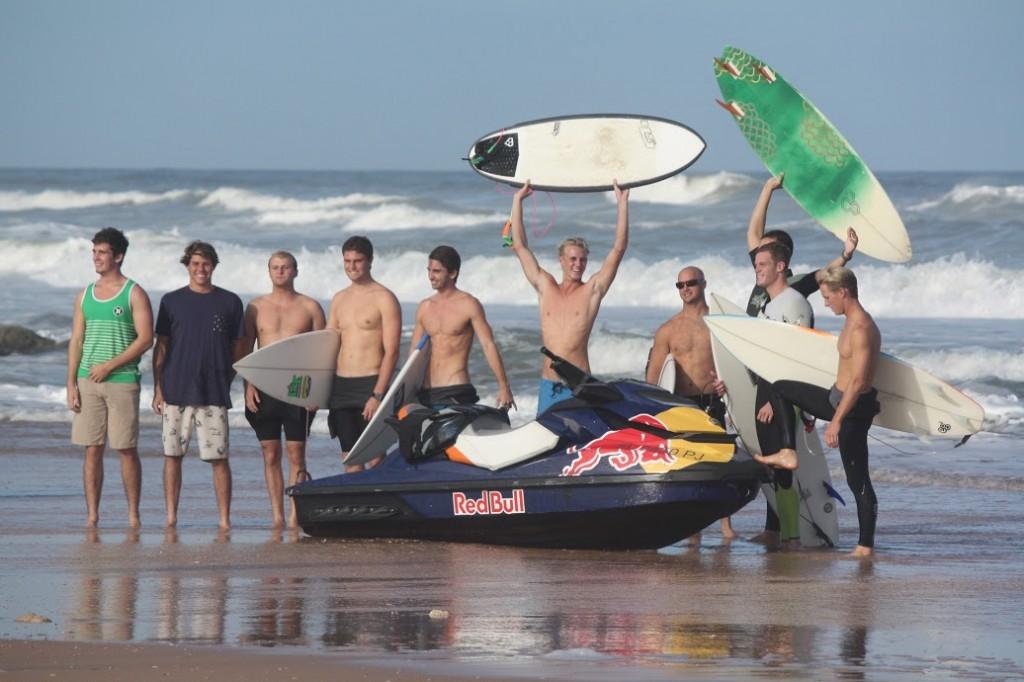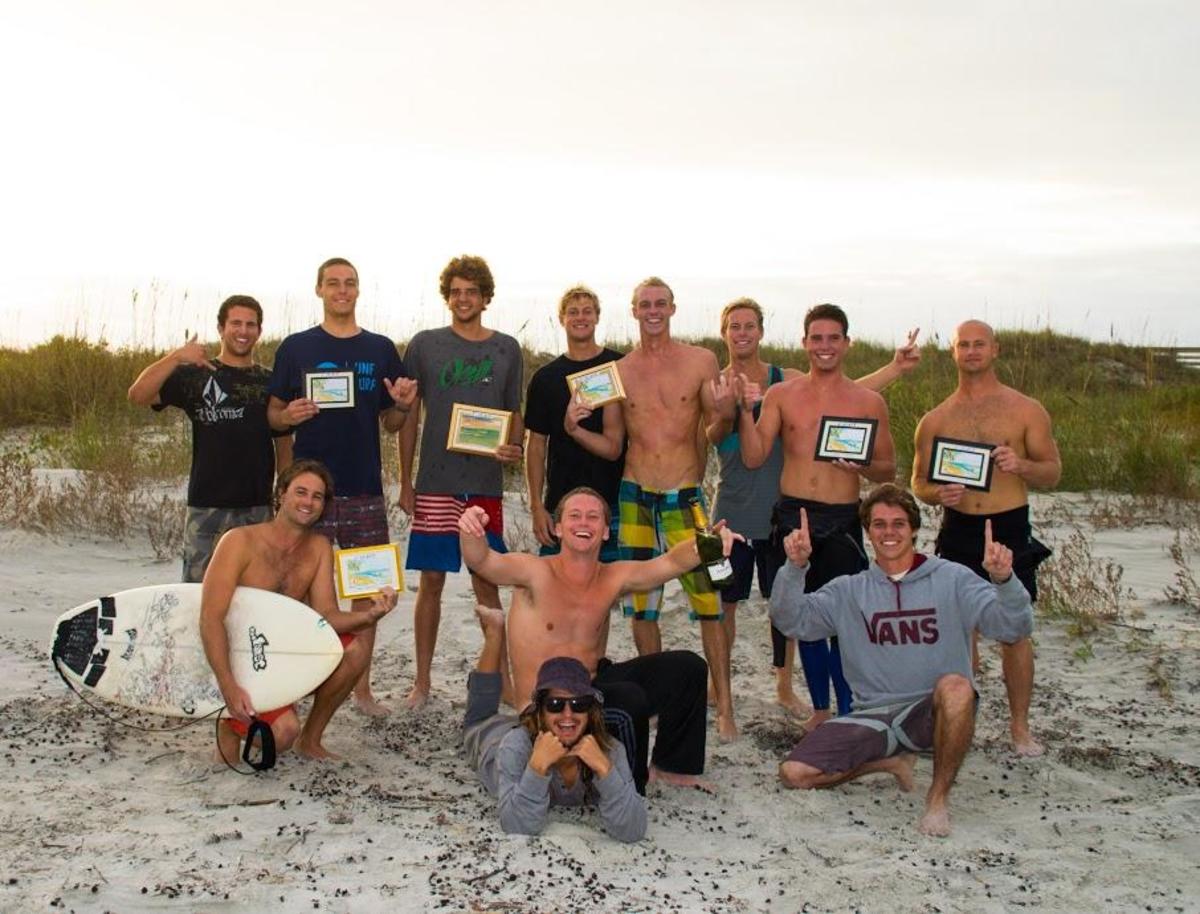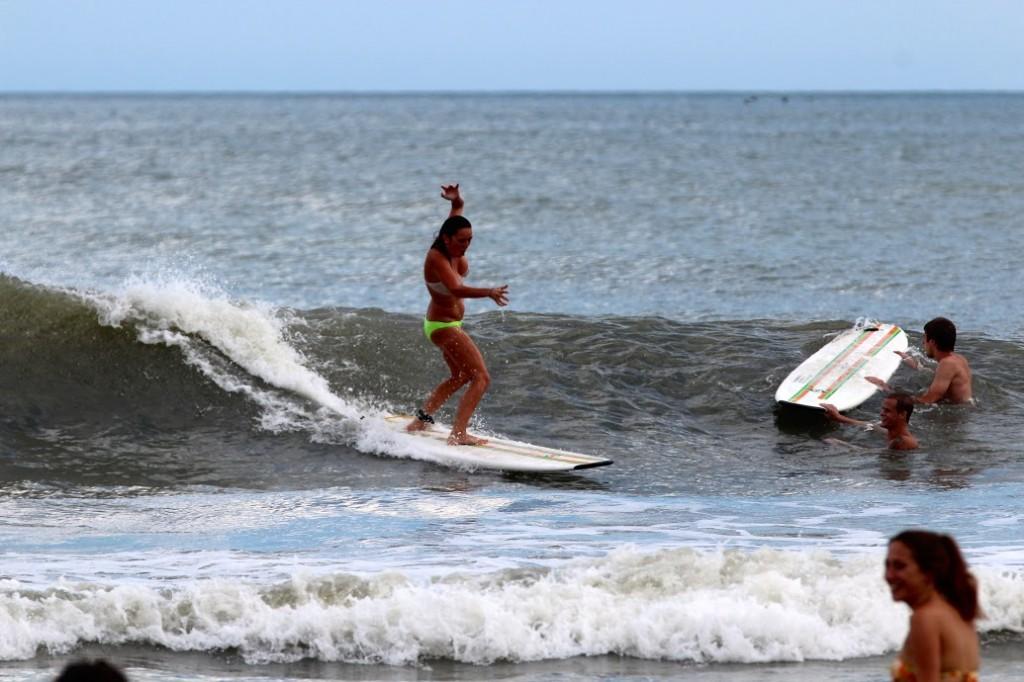
The UNF Surf Club is preparing to send two teams to California to compete at the National Scholastic Surfing Association Nationals.
Seek out the students with tanned skin and sun-lightened hair, well-shaped calves and skateboards that make the concrete on campus go liquid, and they may tell you that they chose UNF not because of the Jazz program, but because of the location. Located about 10 miles from the beach, the school has attracted students who came to surf, and the UNF Surf Club has given those students opportunities to grow and compete.
Club president Adam Bartoshesky, marketing senior, sits back in his chair and thinks about exactly what it is he likes about surfing. It’s hard to put into words. Surfing has taken him to warm waters all over the planet: Southern California, Nicaragua, Fiji. But surfing is a different kind of sport, especially when you consider teams.
Don’t try imagining the pack of surfers out on the pier running drills. “We don’t have organized practices, per se,” Bartoshesky said.
However they have been practicing, it seems to work.
At the last competition, both UNF teams took top honors, which means not only did the A-team win first place, but the B-team managed to beat out every other school’s A-team when they took second. The NSSA Eastern Conference is coming up in April, and the club is excited for the next year.
Sports clubs like the Surf Club face challenges many clubs don’t, Ritter said. He joined the student government senate to push legislation that favored sports clubs like the Surf Club or Rugby Football Club because clubs don’t receive the same kind of funding as other athletic organizations, yet they hold the potential to still bring recognition to the university.
Over the past five years, the Surf Club has grown considerably. With more students joining and trying out for the team, they are doing better at competitions and increasing their recognition at UNF.
They are taking an organizational path that differs from most clubs: leadership isn’t only with seniors and upperclassmen. Responsibilities get delegated to younger members who have more time in the club, and more time to see the club grow.

The prize at the end of the tunnel is the NSSA Nationals, which takes place in Southern California. To get there, it will take dedication and effort, but it will also take money.
With contest fees estimated at $7,680 and travel fees which more than double that, the Surf Club is an organization where good fundraising and smart promotion are required to compete. One of the biggest sources of fundraising comes from parties that the club hosts.
The only way these parties can happen is through sponsorships and donations the club gets from companies like SPY, Aqua East and SweetWater Brewing Company.
“SweetWater was huge for us,” said Alex Wight, finance and economics senior and former club president.
“Every time we wanted to have a fundraising event or some kind of a party where we could charge people to get in, they threw us five kegs every single time. That covers several hundred dollars in costs.”
Annual events like the Backyard Bro Down, going into its third year, bring out upwards of 300 attendees, Wight said.
Those kinds of donations have enabled the team to go to nationals the past three years.

Tom Ritter, marketing senior and former Surf Club President, places a black leather portfolio on the table, the letters CSX embossed into the cover. Though he is not as involved with the club now as he used to be, what he learned through his involvement has led to his job as a contracted employee in sales and marketing.
When Ritter was in his sophomore year, he decided to get more involved with the club and focus on campus outreach. This included hosting movies on campus, and setting up a tent at club alliance events and on the green.
Sports clubs like the Surf Club face challenges many clubs don’t, Ritter said. He joined the student government senate to push legislation that favored sports clubs like the Surf Club or Rugby Football Club because clubs don’t receive the same kind of funding as other athletic organizations, yet they hold the potential to still bring recognition to the university.
Over the past five years, the Surf Club has grown considerably. With more students joining and trying out for the team, they are doing better at competitions and increasing their recognition at UNF.
They are taking an organizational path that differs from most clubs: leadership isn’t only with seniors and upperclassmen. Responsibilities get delegated to younger members who have more time in the club, and more time to see the club grow.turnout, and it’s something they would like to hold once a month once the waters get warmer.
Getting students to the beach can be harder than one may think, especially when considering travel costs. Often, students who want to watch competitions ride along with the team to New Symrna, where they take place.
“You enter a team of nine surfers, there are six male shortboarders, two female shortboarders and one longboarder who can be either male or female” said Bartoshesky “A school can have as many as they want.”
Any student can join the club, even if they don’t know how to surf, through tryouts for the team are usually held in the fall.
They’re still six months away from nationals, but their goal of getting both teams to California isn’t too far out of reach, as long as the money, the organization, and the waves can take them there.







